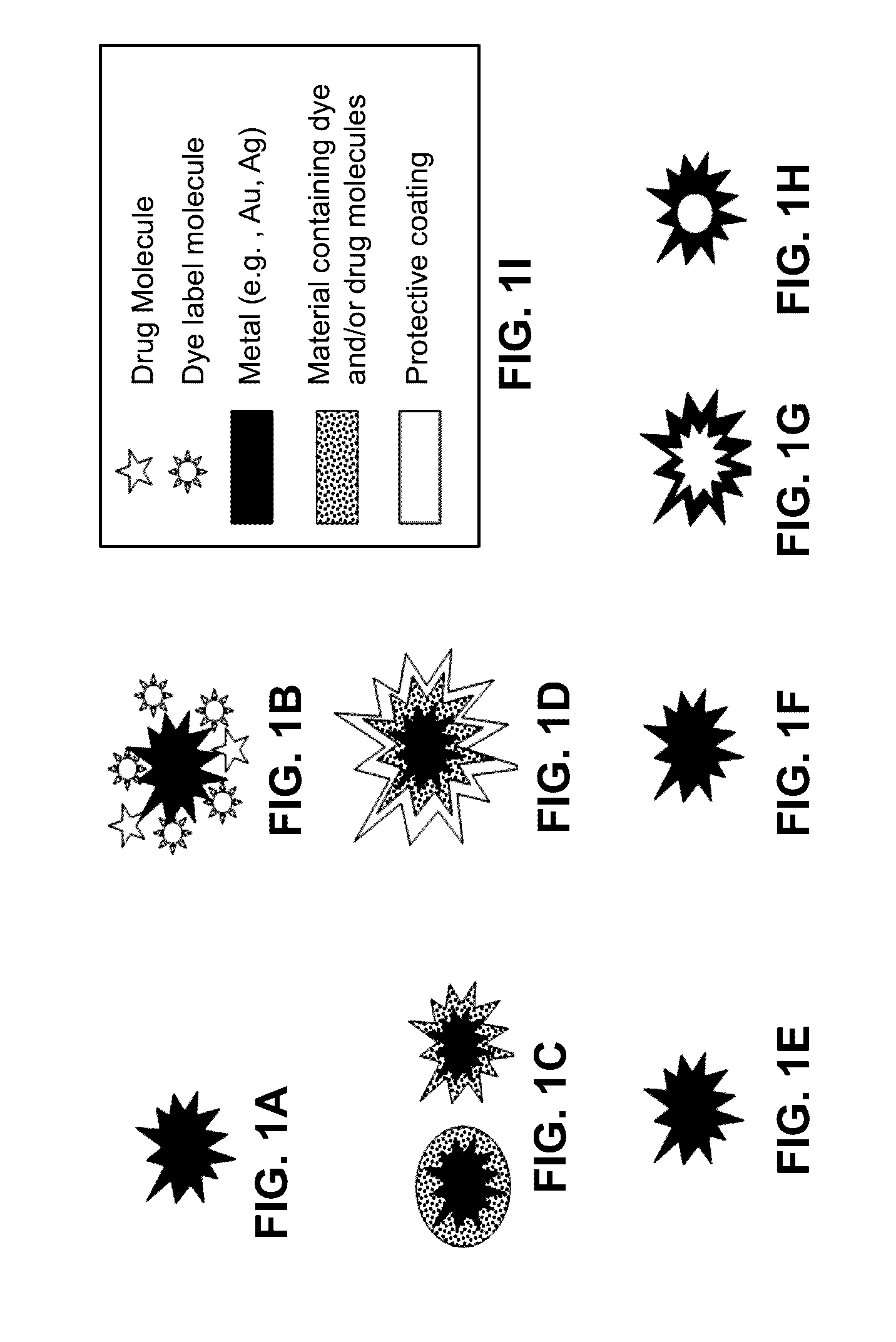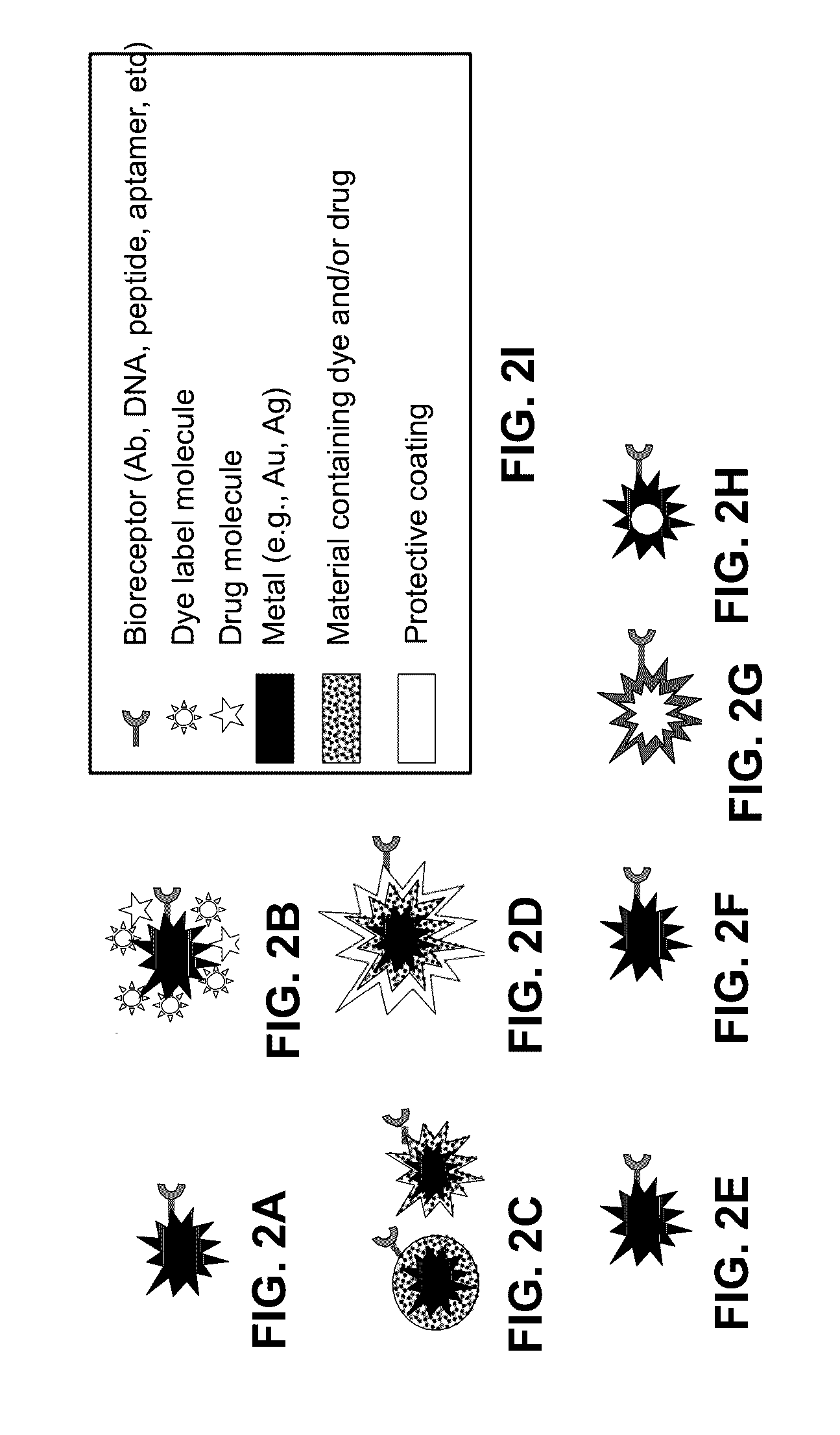Nanostars and nanoconstructs for detection, imaging, and therapy
a nano-construct and nano-star technology, applied in the field of metal nano-stars, can solve the problems of insufficient intracellular particle delivery, toxicity can become an issue, selective destruction of cancerous lesion,
- Summary
- Abstract
- Description
- Claims
- Application Information
AI Technical Summary
Benefits of technology
Problems solved by technology
Method used
Image
Examples
example 1
Polymer-Free Synthesis Method for Preparation of High-Yield Monodisperse Gold Nanostars
[0093]Recently, star-shaped AuNPs (“nanostars”) have attracted interest because their plasmon can be tuned to the NIR region, and the structure contains multiple sharp tips that can greatly enhance incident electromagnetic fields. Studies have shown that NIR-absorbing nanorods, nanocages or nanoshells can be used as contrast agents in optical imaging techniques such as optical coherent tomography, two-photon luminescence (TPL) microscopy, and photoacoustic imaging. Their large absorption cross-sections can also effectively convert photon energy to heat during photothermal therapy. Nanostars, which absorb in the NIR, are hypothesized to behave similarly. Nanostar-related bioapplication remain scarce in spite of their potential, mostly due to the difficulty of surface functionalization.
[0094]In 2003, Chen et al. [[Chen S, Wang Z L. Ballato J, Foulger S H, Carroll D L. J Am Chem Soc. 2003 Dec. 31; 12...
example 2
Preparation of Hollow Gold Nanostars
[0114]Hollow gold nanostars were prepared using the same seed-mediated growth method described above in Example 1 and are shown in FIG. 9. Use of hollow gold nanoshells as the seed particle in the method of Example 1 allows for the growth of branches while keeping the hollow interior intact. Such particles have similar applications to regular gold nanostars, with the added advantage of drug or other small molecule encapsulation within the hollow interior.
example 3
Preparation of Magnetic Core Gold Nanostars
[0115]Gold nanostars that have superparamagnetic cores can be synthesized by first coating superparamagnetic iron oxide (IO) particles with a layer of gold (IO@Au), then using these IO@Au particles as seeds in the gold-nanostar synthesis procedure described above in Example 1. Such particles have similar applications to regular gold nanostars, with the added advantage that the magnetic core nanostars can be manipulated by an external magnetic field. A schematic of this process is shown in FIG. 10.
PUM
 Login to View More
Login to View More Abstract
Description
Claims
Application Information
 Login to View More
Login to View More - R&D
- Intellectual Property
- Life Sciences
- Materials
- Tech Scout
- Unparalleled Data Quality
- Higher Quality Content
- 60% Fewer Hallucinations
Browse by: Latest US Patents, China's latest patents, Technical Efficacy Thesaurus, Application Domain, Technology Topic, Popular Technical Reports.
© 2025 PatSnap. All rights reserved.Legal|Privacy policy|Modern Slavery Act Transparency Statement|Sitemap|About US| Contact US: help@patsnap.com



